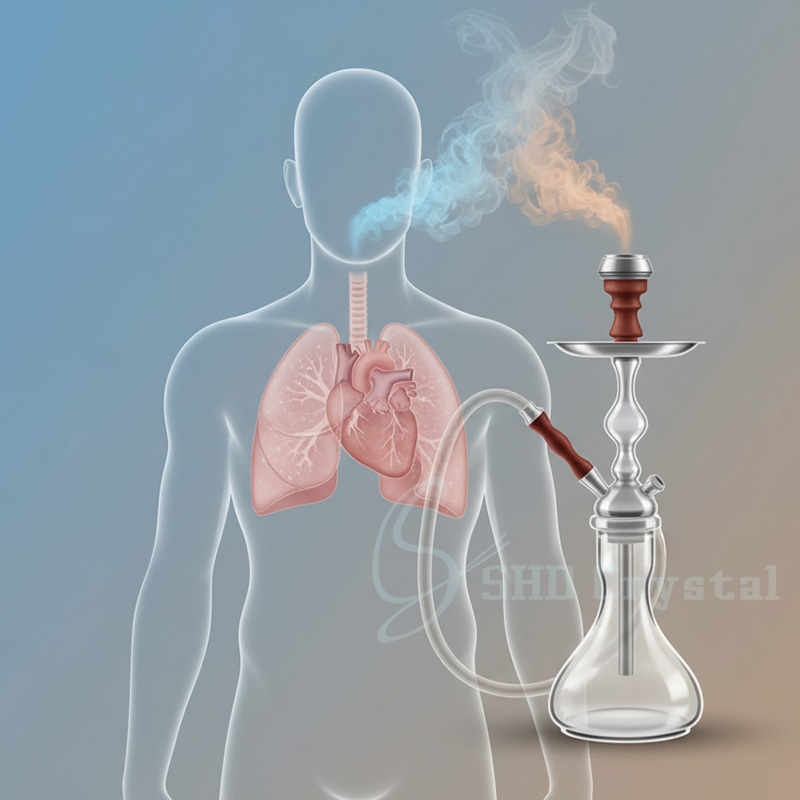> Blogs > Hookah and Reproductive Health: What Science Says About Long-Term Risks
Hookah and Reproductive Health: What Science Says About Long-Term Risks
Core keywords: hookah and reproductive health, hookah health effects, safe hookah practices
Hookah, also known as shisha or waterpipe, carries centuries of tradition. Once confined to cultural rituals and social gatherings, it’s now a global lifestyle accessory—especially among young adults seeking a slower, more aesthetic form of relaxation.
Yet the science behind hookah and reproductive health paints a less tranquil picture. While many believe the water in a hookah base filters out harmful toxins, medical research shows water cooling does little to eliminate nicotine, carbon monoxide, and heavy metals. These compounds circulate throughout the body, affecting multiple systems—including those responsible for hormonal balance and fertility.

Understanding Hookah and Reproductive Health
To better understand the connection between hookah use and overall well-being, we must first look at what happens at a biological level. The discussion of hookah and reproductive health extends beyond fertility—it involves hormonal regulation, oxygen circulation, and long-term systemic effects. Scientists and physicians increasingly highlight how lifestyle choices, even traditional ones like waterpipe use, can subtly alter internal balance over time.
The Science Behind Hookah‘s Systemic Impact
When users inhale from a waterpipe, smoke passes through charcoal-heated tobacco that releases hundreds of chemical compounds. Reports from international public-health bodies indicate that a single hookah session may expose users to volumes of smoke comparable to smoking many cigarettes.
These exposures can enter the bloodstream, constrict blood vessels, and reduce oxygen supply to key organs. Over time, such hookah health effects extend beyond the lungs, influencing cardiovascular, endocrine, and reproductive systems. Chronic exposure to carbon monoxide and heavy metals (e.g., lead, cadmium) has been associated—though not proven as direct causation—with impaired sperm function, altered hormonal regulation, and oxidative stress in reproductive tissues.

Understanding the Risks for Men
Medical literature suggests prolonged hookah use may relate to decreased sperm motility and changes in testosterone, primarily through two pathways: reduced oxygenation and cellular stress. Nicotine’s vasoconstrictive properties may also influence circulation relevant to reproductive function.
Not every user will experience measurable changes, but cumulative exposure increases risk—especially alongside a poor diet or environmental pollutants. Experts recommend viewing hookah and reproductive health as connected considerations rather than separate issues.
Potential Effects on Women
For women, the same chemical agents present in hookah smoke can interact with ovarian function and hormonal signaling. Carbon monoxide binding to hemoglobin reduces oxygen delivery to tissues and may interfere with ovulatory cycles.
During pregnancy, secondhand hookah smoke can add to carbon monoxide exposure for both mother and fetus. Potential consequences are cumulative rather than immediate; each session contributes incrementally to overall exposure.
Energy, Well-Being, and Intimate Relationships
Reproductive health is not only about fertility—it is also about vitality and hormonal balance. Chronic exposure to smoked constituents may contribute to fatigue and circulatory strain, indirectly affecting mood, intimacy, and quality of life. Many of these changes are modifiable in early stages by reducing frequency, improving ventilation, and choosing lower-toxicity equipment—practical steps to limit hookah health effects without dismissing cultural ritual.

Expert Advice: Safe Hookah Practices for Mindful Users
Public-health guidance consistently notes that abstaining from smoking is safest. For adults who still choose to enjoy hookah occasionally, the following safe hookah practices can help reduce risk:
- Use high-quality, natural charcoal rather than quick-light options with chemical accelerants.
- Keep sessions short—ideally under an hour—to limit cumulative exposure.
- Clean the base, hose, and bowl after each use to prevent residue build-up.
- Ensure good ventilation—open windows or smoke outdoors to reduce carbon monoxide.
- Choose safer materials—lead-free glass bases, food-grade silicone hoses, and certified accessories to minimize contamination.
Combining cultural appreciation with scientific awareness helps protect health while preserving the communal, meditative character of the ritual.
SHD Crystal: Design with Care
At SHD Crystal, we align craftsmanship with safety. As specialists in precision glass hookah design, we focus on purity of materials and thoughtful construction so that aesthetic pleasure and long-term wellness can coexist.
Bookmark this article and explore our health and design insights—where tradition, science, and responsibility meet to shape a safer hookah culture.
【Disclaimer】 This article is for informational purposes only and does not constitute medical advice. Consult a qualified healthcare professional for personal guidance.
- : No. 68 Shasong Road, Shajing Street, Bao'an District, Shenzhen, Guangdong Province
- : +86-755-2335 8353
- : info@shdcrystal.com
Follow us